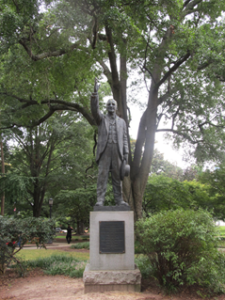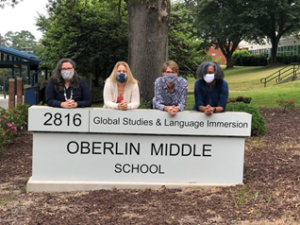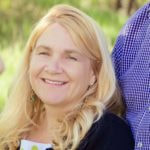|
Right outside the Raleigh Youth Mission office is Nash Square. It is a green space full of trees nestled in downtown Raleigh.
So, why remove his statue? It turns out Daniels was a fierce white supremacist and segregationist. Along with others, he was a leading perpetrator of the 1898 Wilmington Massacre. This massacre was directly targeted at Black Americans. The Wilmington Massacre was carried out by white supremacists in Wilmington, North Carolina on November 10, 1898. It is estimated that hundreds of African Americans were killed. A great documentary to watch is Wilmington on Fire. Daniels believed that, “the greatest folly and crime in U.S. history was giving Negroes the vote.” He and his newspaper championed the white supremacy cause in frequent news reports, vigorously worded editorials, provocative letters, and vicious front page cartoons that called attention to what the newspaper called the horrors of “negro rule.” Daniels headed up the anti black propaganda campaign by arguing that as long as African Americans had any political power, they would block progressive reforms. He was highly influential in the state legislature’s passage in 1900 of a suffrage amendment that effectively disenfranchised most African Americans in the state, excluding them from the political system for decades until the late 20th century. They were also excluded from juries and subject to legal racial segregation, via the Jim Crow laws. History decided that his good acts out weighed his racism and made him out to be a hero. Daniels had a voice, a loud voice, that discriminated against and impoverished many African Americans. History has a way of ignoring the wrongs when it comes to supporting the status quo. This is an example of lies of omission, of hiding histories because they are too insidious. We as Americans like to sweep the bad stuff under the rug. As I began to research more about Josephus Daniels, I uncovered other fascinating historical facts about my community. It turns out that one of the middle schools in Raleigh was named after Daniels. Along with his statue being removed the name of school was also changed this past summer. The school is now known as Oberlin Middle School. Why the name Oberlin? Right after the emancipation in 1865 – African Americans could own land in the Oberlin area, which at that time was right outside the city limits of Raleigh. This area was named after Oberlin College in Ohio – which was the first school to allow blacks to actually graduate with a degree – some colleges allowed black students to attend, take and pay for classes, but not receive a diploma. Here is some more information on Oberlin Village.
But his family continued the fight as he entered High School. Once again the closest school to where he lived was Broughton High School in Raleigh, but he was not allowed to attend that high school because of the segregation laws. This is the time frame when Holt’s case finally went to court – in fact it went all the way to the US Supreme Court – which ruled in his favor and awarded him the right to attend Broughton HS – the only problem was that Joe had just finished his freshman year of college. People still today will say to Joe – “Oh you were the first African American at Broughton or you were the first African American to graduate from Broughton.” He has to tell them – I never went to Broughton. Once again – history gets distorted, lies of omission of hidden histories reign. We remember the outcome but not the cost to so many African Americans. Here is a video that describes in full detail the story of Joe Holt. I did not grow up in the Raleigh area and so I have spent time researching the area. I was surprised to find that it took a lot of time, questions and conversations in order to discover this history, in fact it took talking with African-Americans who grew up in this area to even know these events took place, to even begin my research. The more I uncovered the more I found. When I share this information with most white people who grew up and/or are current students in the Raleigh area – they are surprised to learn about most of these events. Which brings us to this fact: that there are lies of omission, truths that are never shared because they are insidious. They make people who have done a lot of good things, look bad. But we need to know the full truth. We need to realize that all of us have participated in good and poor choices in our lives. We hope that through both – we learn and grow. We need to know the entire story in order to learn and not repeat the same mistakes over and over again. In Luke 12: 2-3, we find Jesus saying these words: “2 Nothing is covered up that will not be uncovered, and nothing secret that will not become known. 3 Therefore whatever you have said in the dark will be heard in the light, and what you have whispered behind closed doors will be proclaimed from the housetops.” In light of this passage and the hidden histories in Raleigh, consider these questions: Have you ever experienced a time when you discovered a truth that was hidden from you? What was that like to discover the truth? What happens when we bring what was hidden out into the light? Why do you think Jesus shares this information with his followers? How does this bring about the Good News? What have you learned from these stories that will help you in searching for the truth about your community? Most likely there are stories just like this in your location. We at Youth Mission Co offer a 4-part series that you can do with youth to discover your own hidden histories.
0 Comments
Leave a Reply. |
Archives
July 2024
Categories |
Youth Mission Co
Contact UsPO Box 2988
Asheville, NC 28802 (828 )231-4635 Mon - Fri 9 am - 5 pm EST |
SIGN UP FOR YMCO NEWSLETTER |
© Youth Mission Co. All rights reserved.



 RSS Feed
RSS Feed
